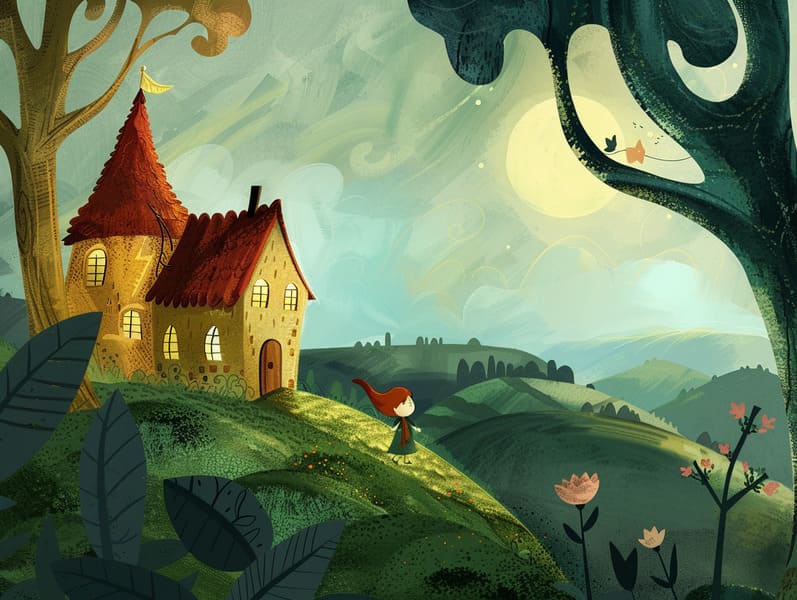The Evolution of Vintage Fairy Tales and Its Unending Captivation.
The Evolution of Vintage Fairy Tales and Its Unending Captivation.
Blog Article

Fairy tales have deep roots. These narratives have been relayed from one generation to the next centuries before they were ever published. They emerged from a variety of cultures, including Western traditions. They were initially passed along among elders, often carrying themes and messages pertaining to the societal norms and beliefs of the time.
The Brothers Grimm, Jacob and Wilhelm Grimm, were among the first to compile and publish many of these beloved narratives. Their published works, "Grimm's Folk Tales," included stories like "The Little Glass Slipper," "Little Brother and Little Sister," and "Snow White," which have since become pillars in the world of children's fairy tales. Similarly, H. C. Andersen's magical tales, such as "The Story of the Little Mermaid," and "The Duckling's Story," have enchanted hearts worldwide, solidifying their place in the pantheon of classic fairy tales.
Despite being ancient, fairy tales remain as impactful as ever, especially as children's bedtime stories. These fantastical tales are now available in multiple formats, including richly illustrated books, charming animations, and internet fairy tales.
Their continued relevance can be traced to several charming aspects:
Vital Lessons: Timeless fairy tales often whisper important moral lessons. Stories like "The Wolf and the Liar" teach the importance of truth, while "The Tortoise and the Hare" show the benefits of persistence and unpretentiousness. These tales offer young readers clear distinctions between right and wrong, helping to shape their moral compass in a soft yet profound way.
Compassion and Insight: Classic fairy tales frequently feature figures facing tests and troubles, inciting listeners to identify with their struggles and back their triumphs. For instance, "Beauty's Beast" points out the value of looking past the exterior to comprehend the true essence of a person, strengthening kindness and perception.
Cultural Comprehension: Many fairy tales are saturated in the cultural contexts from which they blossomed. Engaging with these fairy tales can provide captivating looks into different customs, strengthening a sense of global respect and discernment.
Inventiveness and Imagination: The fanciful elements in classic fairy tales—enchanted forests—spark children’s innovations. These tales guide readers to fantasy realms, enhancing innovative dreams and a sense of awe that stays a lifetime.
Classic fairy tales are not only fantastical but also edifying. They serve as entrancing tools in strengthening various mind and heart abilities in little ones. When fairy tales are spoken out loud, they enhance verbal skills by bringing new linguistic elements and complicated sentence structures. read more This practice also enhances listening skills and focus, as young readers track the narrative, expectant to see what happens next.
Furthermore, reflecting on the themes and characters of traditional fairy tales can improve critical thinking and critical thinking. Young ones are guided to see patterns, guess what will happen, and comprehend cause and effect. These examinations also boost young ones communicate their thoughts and feelings, nurturing their emotional intelligence.
In today’s digital era, the availability of digital fairy tales has made these stories more attainable than ever. Web-based platforms and online apps extend extensive collections of Grimm's fairy tales that can be accessed or listened to anytime, anywhere. Fairy tales read aloud are particularly favored, supplying an immersive method for children to immerse in these charming tales. Narrated books and read-to-me videos move characters and settings to life, often supported by mesmerizing melodies and harmonies that amplify the storytelling experience.
The timeless appeal of traditional fairy tales lies in their ability to evolve to present eras while holding onto their core messages. Contemporary adaptations of these fairy tales often show more inclusive figures and modern settings, making them pertinent to today’s audience. However, the basic principles of fearlessness, goodness, and honesty remain unchanged, continuing to impact children of all ages.
Timeless fairy tales also offer a sense of ease and comprehensibility. They grant a structured narrative with a distinct beginning, middle, and end, often coming to a close with the ending of conflicts and the triumph of honesty over deceit. This steadiness can be comforting for the young, sharing a sense of consistency in an fluctuating world.
Classic fairy tales continue to mesmerize and educate new generations, maintaining their attraction and pertinence in modern society. As nighttime stories for kids, they render a perfect blend of charm and understanding, sustaining moral values, empathy, and creativity. The abundance of digital fairy tales and the favor of fairy tales told out loud confirm that these traditional tales remain within reach to new generations.
By maintaining and recounting these fairy tales, we continue to treasure the rich tapestry of mythology and cultural heritage. Whether you are enjoying a artistically illustrated book, perusing a web-based collection, or listening on an spoken story, the enchantment of popular fairy tales is always within reach. These tales highlight of the consistent effect of fairy tales and its ability to bind us across epochs and places.
No matter if you are accessing a gorgeously illustrated book, enjoying a electronic collection, or listening on an audiobook, the loveliness of classic fairy tales is always within reach.
These stories convey of the unwavering presence of fairy tales and its ability to connect us across generations and cultures, establishing a link that charms and informs alike.